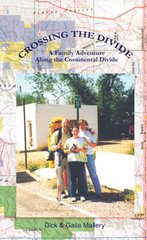
by Bill Scanlon
Bears will puzzle over what's going on in their park Tuesday when dozens of researchers and trained volunteers dip flasks into streams, lakes and wetlands on both sides of the Continental Divide.
The great Water Blitz isn't the latest ride at Water World, but an ambitious one-day odyssey to test water at hundreds of different locations at Rocky Mountain National Park.
"It's one of the first efforts of this kind on such a scale in the world," Judy Visty, research administrator at RMNP, said.
The idea is to circumvent the kind of problem researchers face when they test one stream on a sunny day, another the next day after a rain, a third the following day when the algae are photosynthesizing to beat the band.
This "snapshot in time" will capture the state of the water throughout the park and help scientists understand where extra nutrients are harming the ecosystem.
"The park is a natural lab, more pristine than the surrounding area," yet affected by fertilizers and pollution from the rest of Colorado, Visty said.
They're hoping to find some patterns that could explain why the massive beetle kill of lodgepole pines and other trees is so much larger than in past infestations.
As the lodgepole pines go, so do the sapsuckers and other birds that feed on their bounty.
Scientists want to learn more about the species of algae that have proliferated in lakes, multiplying ever since the 1950s with the explosion of nitrogen-based fertilizers.
"If we have nitrogen pollution arriving with precipitation, is it worse in some places than others?" Visty said. "How does it show up in the streams? We know it collects in precipitation, but what actually happens when it goes into the water?"
Researchers will be in charge of the veteran volunteers who, for this project, got hour-long training in water-sample-collection techniques.
"This is a citizen science project," Visty said. "It shows how citizens can make really tremendous contributions. Many pairs of helping hands allow scientists to investigate on a scale he or she could never dream of doing alone."
Bears will puzzle over what's going on in their park Tuesday when dozens of researchers and trained volunteers dip flasks into streams, lakes and wetlands on both sides of the Continental Divide.
The great Water Blitz isn't the latest ride at Water World, but an ambitious one-day odyssey to test water at hundreds of different locations at Rocky Mountain National Park.
"It's one of the first efforts of this kind on such a scale in the world," Judy Visty, research administrator at RMNP, said.
The idea is to circumvent the kind of problem researchers face when they test one stream on a sunny day, another the next day after a rain, a third the following day when the algae are photosynthesizing to beat the band.
This "snapshot in time" will capture the state of the water throughout the park and help scientists understand where extra nutrients are harming the ecosystem.
"The park is a natural lab, more pristine than the surrounding area," yet affected by fertilizers and pollution from the rest of Colorado, Visty said.
They're hoping to find some patterns that could explain why the massive beetle kill of lodgepole pines and other trees is so much larger than in past infestations.
As the lodgepole pines go, so do the sapsuckers and other birds that feed on their bounty.
Scientists want to learn more about the species of algae that have proliferated in lakes, multiplying ever since the 1950s with the explosion of nitrogen-based fertilizers.
"If we have nitrogen pollution arriving with precipitation, is it worse in some places than others?" Visty said. "How does it show up in the streams? We know it collects in precipitation, but what actually happens when it goes into the water?"
Researchers will be in charge of the veteran volunteers who, for this project, got hour-long training in water-sample-collection techniques.
"This is a citizen science project," Visty said. "It shows how citizens can make really tremendous contributions. Many pairs of helping hands allow scientists to investigate on a scale he or she could never dream of doing alone."












No comments:
Post a Comment